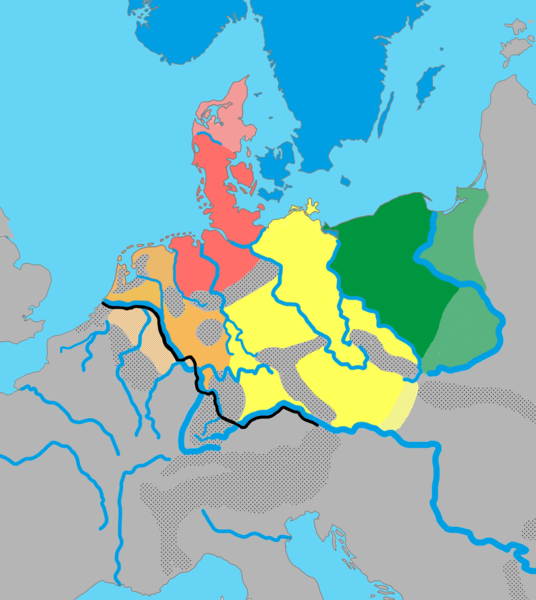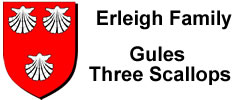Germanic Tribes
The Roman historian, Tacitus (c AD 56 – c. 12), wrote regarding the inhabitants of Germania, noting that they comprised three groups or supertribes, known as the
#1 Ingaevones (or Ingvaeones, according to Pliny)
#2 Irminones (also referred to as Herminones or Hermiones)
#3 Istvaeones
These three groups of Germanics were said to descend from the three sons of Mannus (meaning ‘man’).
From the proto-Indo-European (PIE) language spoken by these tribes, the word ‘manus’ literally refers to a man (singular). Mannus, in turn, was the son of Tuisto (meaning ‘god,’ from the PIE ‘deiwaz’ or diety).
The older name Tuisto evolved into Tiw amongst the Anglo-Saxons and Tyr amongst the Norse.
Pliny also names these three groups but adds two more: the Bastarnae and Vandili (Vandals), who occupied lands to the east of the other three.
These latter two were evidently later immigrants from Scandinavia. Tacitus made no mention of any tribes in Scandinavia itself.
The Bastarnae may have been adopted into the Hermiones.
When writing or recording these names, the ‘-on’ suffix is a Germanic definite article (i.e., ‘the’), which is used to indicate a “plurality” as a single grouping. The classical writers also added to these three names the ‘-es’ suffix. This is a Latin plural suffix.
The three sons would then be the singular:
Ingvae – North Germanic
The name Ingvar is an Old Norse first name for men common in Scandinavia, meaning “protected by Yngvi” and is pronounced Istwae or, in Norse style, Ystvi. It is found as the name of one of the runes. The “ing” can also be “ang” and could be where we get the names Engish or Angle. The roman ‘v’ is pronounced as a ‘w’, so the name would originally have been pronounced as ‘Ingaew’. In the Old English poem, Beowulf, this tribal name shows up as the Ingwine (pronounced ‘ing-vin-eh’), and the Norse given name is Yngvi; the older form of the name must be corrected to ‘Ingvae’ or ‘Ingwae’ Given the etymology of Hermin, the likelihood that this may be an Indo-Aryan Asura name must be considered.
Irmin / Hermin – Central Germanic
Irmin / Hermin, in Germanic origin, means Army man. The name Hermin is of Germanic origin. its descendants are Old Norse ‘Jǫrmun’, Anglo-Saxon ‘Eorlmen,’ and Old Saxon ‘Irmin.’ This is a name of a deity, as in the familiar Vedic deity, Aryaman, one of the Asura.
Istvae – West Germanic
One of the least clearly defined of these groups but clearly associated with the various tribes in the Rhine frontier region. Pliny also explains that the Chatti, Cherusci, and Chauci are not included in the group. Tacitus specifically named various tribes such as the Chamavi, Bructeri, Sugambri, Ubii, and others.
All three of these names appear to be Indo-Aryan (Indo-Iranian) asura names.
This opens up the possibility that ‘ing’ underwent a similar change to the initial vowel. Since it appears that the ‘a’ of Aryaman changed to the ‘i’ of Irmin, then it can be accepted that the ‘i’ of Ing can be changed back to an ‘a’. This yields Ang, and that word is found in Old Iranian, aka Avestan.
It is possible that a group of ancient Iranian nomads (R1a – Yamana Culture) traveled north from a location around the Black Sea or the Caspian Sea and established themselves among other Indo-Europeans in Denmark or southern Sweden, hybridizing their languages to form proto-Germanic.
The Ingaevones
Ingaevones were in the north of Germania and included the tribes of :
- Cimbri
- Teutoni
- Saxoni
- Angli
- Chauci
The Irminones
Irmiones were more toward the center of Germania and included the:
- Suevians / Suevi confederation
- Hermunduri
- Catti
- Cherusci
- Heruli
- Quadi
- Lombards
- Vandals
The Istvaeones
Istaevones, in the west of Germania, which included the:
- Frisii
- Batavi
- Sicambri
- Alemanni
Historical sources give no complete account of the Istvaeones. Modern historians attempt to extrapolate their tribal constituents based on later sources, archeological findings, and linguistic information.
Pliny the Elder (23 CE – 79):
Pliny recorded in his writing five German races;
1. The Vandili, parts of whom are the Burgundiones, the Varini, the Carini, and the Gutones.
2. The Ingævones, a portion of whom are the Cimbri, the Teutoni, and the tribes of the Chauci.
3. The Istævones, who join up to the Rhine, and to whom the Cimbri belong.
4. Hermiones dwell in the interior and include the Suevi, the Hermunduri, the Chatti, and the Cherusci.
5. The Puccini, who are also the Basternæ, adjoining the Dacians.
Tacitus – Records Three Groups
RED- North Sea Germanic (Jutland), or Ingvaeonic
OARNGE – Weser-Rhine Germanic, or Istvaeonic
YELLOW – Elbe Germanic, or Irminonic
Pliny Adds two more for a total of 5
GREEN – East Germanic, Peucini, who are also the Basternæ

Istvaeones as possible ancestors to the Franks
There is an overlap between Germanic tribes generally assumed to have been Istvaeonic in terms of dialect and culture, and the tribes who came later to be thought of collectively as the earliest “Franks”.
The Chamavi may have been the first such tribe, around which neighbours came also to be called by this name.
The Chamavi were mentioned as a Frankish people as early as 289, the Bructeri from 307, the Chattuarri from 306-15, the Salii or Salians from 357, and the Amsivarii and Tubantes from c. 364-75.
The large “Irmionic” nation of the Chatti also seem to have been considered Franks, or allies of the Franks.
Pliny refered to the dialects spoken by the Franks and Chatti around the northwestern banks of the Rhine, which were presumed to be descendants of the earlier Istvaeones.
All Germanic languages are derived from Proto-Germanic, spoken in Iron Age Scandinavia.
Northern West Germanic languages or “Istvaeonic” dialects consist of Old Frisian, Old English, and Old Saxon, Dutch and their descendants.
North Germanic languages or “Ingaevonic” dialects are Swedish, Danish and Norwegian, Icelandic.
The Anglo Saxon People
The Anglo-Saxon people of England originate from:
- The Ingaevones – North Sea Germanic, or Ingvaeonic – Angles
- The Istvaeones – Weser-Rhine Germanic, or Istvaeonic – Saxons

